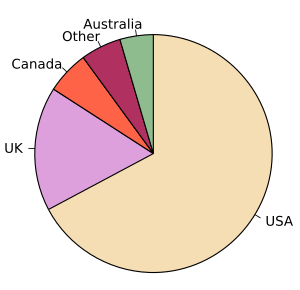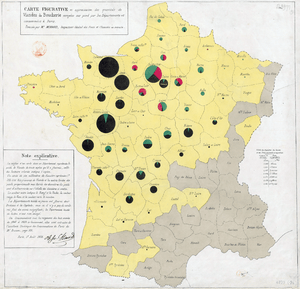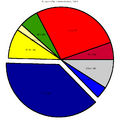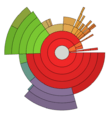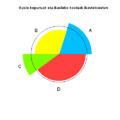Pie chart facts for kids
A pie chart is a special kind of chart. It looks like a round pie or circle. This chart helps us see how different parts of information, called data, relate to each other. It's easy to spot the biggest or smallest part of the total data just by looking at the slices.
The History of Pie Charts
The very first pie charts we know of were made by William Playfair. He included two of them in his book, Statistical Breviary, in 1801.
At first, not many people used this new way of showing data. A French engineer named Charles Joseph Minard was one of the first to use them more widely. In 1858, he put pie charts on his maps. This helped him add more information to his maps.

Some people mistakenly thought that Florence Nightingale invented the pie chart. However, Playfair had created them much earlier.
Nightingale was very important because she used charts to share important facts with many people. She helped show how useful these visual tools could be.
Why Pie Charts Can Be Tricky
Pie charts are not always the best way to show information clearly. Experts have known this for a long time. It's usually best to use pie charts only when the parts add up to a meaningful total. For example, if they show different proportions of a whole.
You won't often see pie charts in science reports. They are more common in business and economics. One reason for this is that it's harder to compare the sizes of things when you use areas (like pie slices) instead of lengths (like bars). Our brains find it easier to see small differences when comparing lengths.
Look at the image on the right. Both the pie chart and the bar chart show the exact same information. Most people find it hard to put the slices in the pie chart in order from biggest to smallest. But with the bar chart, it's much easier to see the differences between bars, even if they are very similar in size.
Images for kids
See also
 In Spanish: Gráfico circular para niños
In Spanish: Gráfico circular para niños


